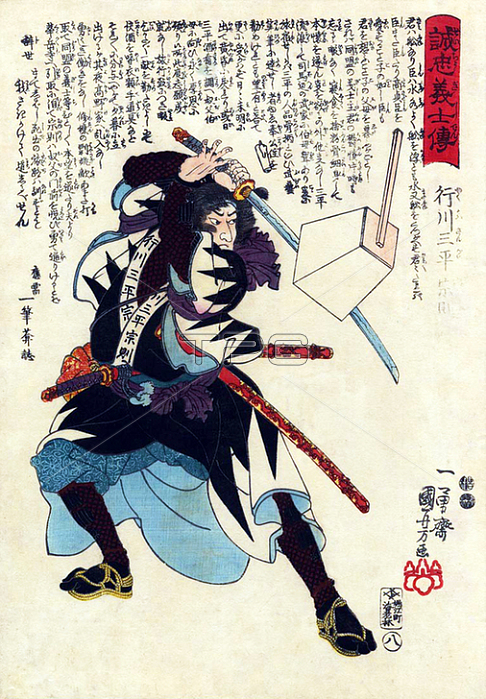
The revenge of the Forty-seven Ronin (???? Shi-ju-shichi-shi); also known as the Forty-seven Samurai; the Ako vendetta; or the Genroku Ako incident (?????? Genroku ako jiken) took place in Japan at the start of the 18th century. One noted Japanese scholar described the tale as the country's 'national legend'. It recounts the most famous case involving the samurai code of honor; bushido.
The story tells of a group of samurai who were left leaderless (becoming ronin) after their daimyo (feudal lord) Asano Naganori was forced to commit seppuku (ritual suicide) for assaulting a court official named Kira Yoshinaka; whose title was Kozuke no suke. The ronin avenged their master's honor after patiently waiting and planning for two years to kill Kira.
In turn; the ronin were themselves ordered to commit seppuku for committing the crime of murder. With much embellishment; this true story was popularized in Japanese culture as emblematic of the loyalty; sacrifice; persistence; and honor that all good people should preserve in their daily lives. The popularity of the almost mythical tale was only enhanced by rapid modernization during the Meiji era of Japanese history; when it is suggested many people in Japan longed for a return to their cultural roots.
Fictionalized accounts of these events are known as Chushingura. The story was popularized in numerous plays including bunraku and kabuki. Because of the censorship laws of the shogunate in the Genroku era; which forbade portrayal of current events; the names of the ronin were changed.
| px | px | dpi | = | cm | x | cm | = | MB |
Details
Creative#:
TOP20183579
Source:
達志影像
Authorization Type:
RM
Release Information:
須由TPG 完整授權
Model Release:
No
Property Release:
No
Right to Privacy:
No
Same folder images:

 Loading
Loading